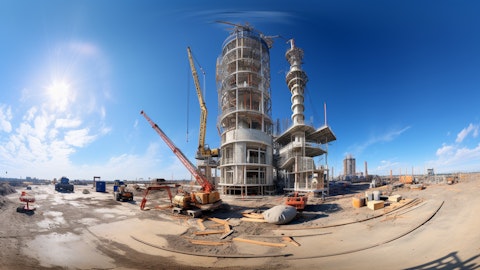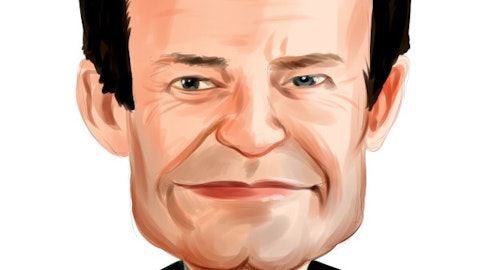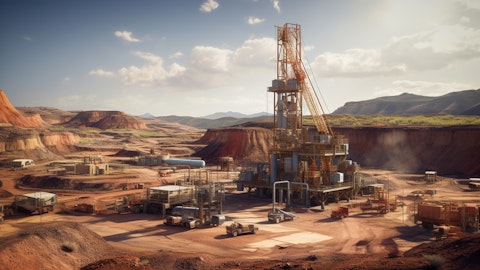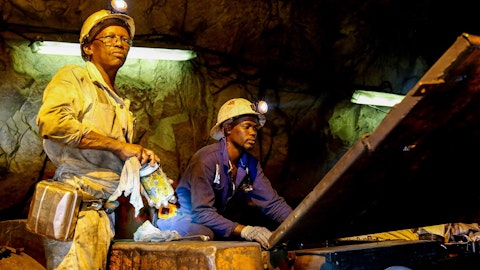Christopher LaFemina: I wanted to ask about the kind of cost trends in North America, in particular, at Morenci. So I know that you’re guiding to a slight increase in your site production delivery costs in 2024. And I assume that is a function of volumes being lower. But if we think about kind of where this business could be headed assuming that Morenci can kind of get back to where it was 12 or 18 months ago, and I’m not sure if that’s a good assumption, but let’s assume that to be the case. With the leaching ramp up, with the staffing and productivity improvements, with the new technologies and potentially even longer term with the Bagdad expansion. Where could that kind of site production and delivery cost number trend down to, could it get back to $2.50 or lower, or is $3 a pound sort of the new normal for that business?
Kathleen Quirk: Well, we hope it’s not the new normal, Chris. We’re working hard. I mean one of the things that you’ve got to take into account here is we are in a low grade period in the US. I think the grades that we had in 2023 were the lowest that they had been in probably 10 years or so or more. So we are in a period and that’s continued in ’24 where we do have some low grades that we’re going through. But that is why it’s so important for us to bring on units with a lower incremental cost and the leach opportunity will help us there. And as we are able to get those pounds put into reserves longer term, not just what you’re mining that year or getting that year but multiyear reserve additions for the leach that spreads the cost — all the costs over more reserves.
And so it does help us with driving the economies of scale and why it’s so important. We’re not in a position now to say where costs could go. There’s been a number of other factors that have — inflation factors and things like the cost of basic parts and materials and supplies has gone up from where it was just two or three years ago, but we are very focused on it. And all of these self help things for us have very high rates of return. There’s not a lot of capital involved. It’s focused resources. It’s not an easy thing because it would have been done already, but it is an area we think we can make improvements. We can also focus, which we’re doing now on the last couple of years, we’ve had to rely more on contractors because of the staffing issues.
But as we get staffing set up and get more experience in the workforce, we can reduce our reliance on contractors, as you probably know, have gotten expensive, and Arizona is a very competitive market. So we’re working on all those things within the things that we have within our control and are really going to be focused on trying to drive the cost down. We’re also looking at Morenci specifically at different configurations. We’re looking at whether it makes sense for us to be operating all of our equipment like we are today and looking at if we cut back some things would that be the cost and benefits to that because that could have volume impacts as well. But is that a better setup, a more efficient setup that will allow us to drive costs lower.
So we’ve got some of those initiatives that are being reviewed right now on what the right setup is given how costs have risen.
Operator: Your next question comes from the line of Orest Wowkodaw with Scotiabank.
Orest Wowkodaw: Given the capital costs involved and the timing of building new projects and the strength of your balance sheet. I’m just wondering whether M&A of producing assets is something that’s on the radar, because it certainly seems like there could be some assets available out there, especially in jurisdictions you’re not currently in?
Richard Adkerson: Well, we’re constantly monitoring the market and you can be confident that opportunities are available are presented to us and we consider them. The facts are we haven’t found those attractive today. We have such great opportunities to create value totally for our shareholders by focusing on internal growth through the leach project, through the brownfield developments in the Americas, through the Kucing Liar project in Indonesia and now with expectation that we’ll go beyond 2041, we’re going to do additional exploration there to understand what the opportunities are. Success in any of those opportunities creates value where there’s no value in our current share price. So it’s all for the best of our shareholders and that makes it much more difficult for external opportunities to compete with them.
And my experience has shown that small mines get smaller and big mines get bigger. So we really are, as I said in my opening comments, pleased about where Freeport is positioned for what we believe is going to be a great future for our company.
Operator: Your next question comes from the line of Edward Goldsmith from Deutsche Bank.
Edward Goldsmith: Two questions from my side. So firstly, can you give an update on the status of the negotiations over concentrate export extension post May? And secondly, can you outline the reductions to the 2024 CapEx? I think they were the discretionary and the other CapEx bucket level.
Kathleen Quirk: On the first part of the question, our current export license in Indonesia goes to May of 2024. And we are continually having discussions with the government of Indonesia about the fact that while we will be substantially complete on construction activities by the end of May, which is — was really important target for us and for them that just the ordinary course of a smelter start-up, it takes five or six months to get through. And so we’re having those discussions, they understand the situation. And they’re encouraging us to continue to meet our targets and that those discussions will continue [Technical Difficulty] that the alignment that we have with the 51% ownership of the state-owned company mined ID in PT-FI’s operations is really important here.





